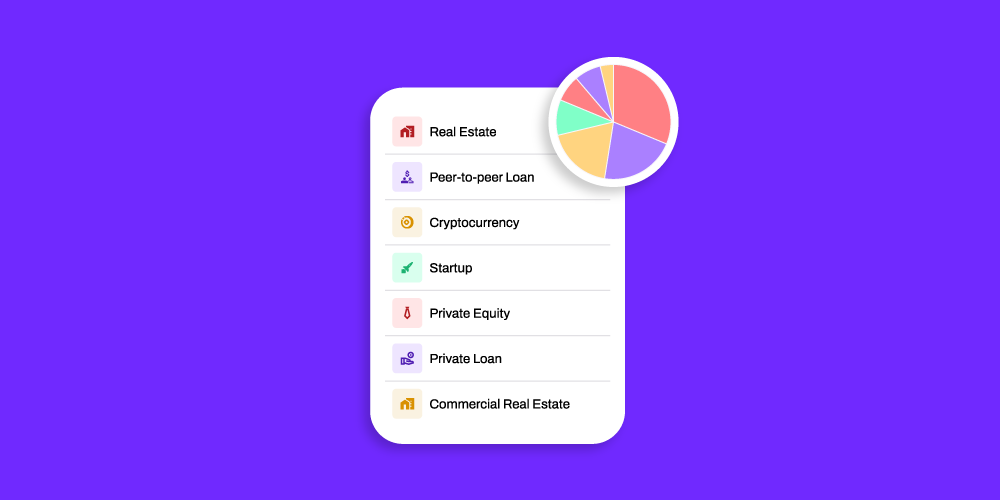How to Maximize Your Retirement Savings with a Self-Directed Solo 401(k)
If you’re self-employed, you understand both the freedom and responsibility that come with running your own business. You may also be eligible to...
4 min read
 Thomas Young
:
March 09 2023
Thomas Young
:
March 09 2023
Wine and Spirits can be an investable asset class in your retirement account, but not as physical assets. As a securitized, intangible asset, much like shares of a publicly traded security, the narrative changes. What is typically considered a “prohibited transaction” is now considered allowable given that the structure of the investment vehicle is modified from a bottle of wine that can be stored in your home and shared amongst friends at a dinner party, to a passive investment, far out of reach and combined with other similar assets (bottles of liquor or fine wine) held within an investment structure similar to a mutual fund (note: it is not a mutual fund).
Our partners at Vint are experts in the wine and spirits asset class, and they have shared their analysis, along with statistical findings regarding this particular allocation to an investor’s portfolio.
So how does one go about investing in wine or spirits? There are three primary types of investment vehicles:
Depending on your investment method, you don't have to take physical delivery. If you invest in wine bottles through investment companies, or in securitized shares, i.e. Vint—the investment company will store and maintain those assets.
It is important to note that if you are investing with your IRA you are limited to investing in shares of securities as you are prohibited from investing in wine and spirits bottles directly per U.S. regulation.
One of the benefits of investing in bottles is that you can take possession of the assets and drink them, which is prohibited within an IRA. The benefit of investing in shares is the ability to diversify using an uncorrelated asset for purposes of diversification. Instead of buying a couple of bottles for $1,000 an investor may have exposure to several hundred bottles for that same $1,000 and the ability to use a tax-advantaged structure such as an IRA. Investments within an IRA are meant for long-term time-horizons and are structured with tax-deferral and compound interest.
For over 120 years, wine returns have outpaced art, bonds, and other alternative investments. Considered to be less volatile than stocks, wine investments have historically offered consistent returns that are uncorrelated with traditional capital markets. This combination of stability and profitability makes wine an outstanding component of a diversified portfolio.
Investors often assume that a diverse portfolio is only available through publicly traded assets such as stocks, bonds, ETFs, and mutual funds. The investment performance of these assets is often contingent on the same systematic factors and is vulnerable to similar risks—such as monetary policy and economic or fiscal shocks. However, there are assets available beyond the indexes and publicly traded markets of the world. Far too few investors are aware of them and the ability to invest using their tax-deferred Traditional and/or Roth IRAs.
Fine wine has yielded a 13.6% annual return on investment during the last 15 years, allowing investors to double their money every six or seven years. In fact, since 2003, the major wine indices have tripled in value. For comparison, stock markets have not kept pace, over the same time period, the Dow Jones registered a 7.8% annual return and the S&P 500 reported an 8.58% yearly return. Not only has fine wine outpaced global equities, but it has also outperformed other tangible assets. The Knight Frank Luxury Investment Index (KFLII) saw five of nine asset classes yielding a negative return in 2020. Conversely, fine wine returned 13% that year, second only to Hermès handbags.
If you are looking for investment opportunities outside of stocks, bonds, and mutual funds, it is certainly worthwhile to look at wine as an investment opportunity. For example, the Financial Times reports that even when the world seemed to descend into uncertain chaos over the first 3 months of 2020 due to the pandemic (MSCI’s world equity index dropping by 24%), wine saw a healthy double-digit increase. In the 2008 crash, the market dropped 38%, but the wine index was down less than 1%. Based on these factors alone should make investing in fine wines a serious consideration for anyone looking for stability in uncertain times.
The wine and spirits asset class possesses two notable characteristics, one being that they are real assets. The second being that the value, or price appreciation, is based on the passing of time, driven by supply and maturation characteristics. The investment performance of this asset class is attributed to these fundamental aspects rather than corporate earnings and revenue reports.
Real assets are physical assets that have an intrinsic worth due to their substance and properties.
Real assets include precious metals, commodities, real estate, land, wine and spirits, equipment, and natural resources. They are appropriate for inclusion in diversified portfolios because of their relatively low correlation with financial assets, such as stocks and bonds. In the case of wine, investment scenarios include ownership of specific bottles or shares backed by physical bottles. Which means, should the wine investment provider shutter its doors, its investors would still own the bottles in their portfolio. In contrast, conventional investments including stocks, bonds, savings accounts, and CDs, which most investors are quite comfortable with, are an asset only on paper.
The second intriguing characteristic of wine and spirits is that the quality, scarcity, and value of the asset appreciates over time. The asset is a consumable, and it is being consumed at ever-increasing rates. Americans are drinking more than a billion gallons of wine each year, with wine consumption in the U.S. doubling over the past 15 years. Globally, growing populations and increasing wealth are driving wine consumption. The growth in wealth is also rapidly expanding wine investment in Asia, Russia, and other parts of the world. Wine and spirits mature with age, improving quality which, in turn, leads to price appreciation. The combination of decreasing supply due to consumption, scarcity of original production, and quality improvement over time make wine and spirits a compelling investment.
Once the investment has been made, investors should expect to hold their shares or bottles for three to five years, on average. If professionally managed, the investment company will look for advantageous exits, which means time horizons can vary dramatically. Another important consideration is that this is not yet a liquid market. The lack of liquidity reinforces the notion that investors must be prepared to hold their assets for a medium to long term.
If you have an interest in investing in wine there are three leading companies in the sector that you can do additional research on. For purchasing shares in an IRA, the only path is through Vint, as it is the only SEC-registered wine and spirits investment company. For purchasing a portfolio of bottles the two leaders are VinoVest and Cult Wines, which would be prohibited in an IRA.

If you’re self-employed, you understand both the freedom and responsibility that come with running your own business. You may also be eligible to...

In today’s investing landscape, many individuals are asking the question: What are the benefits of investing in alternative assets? As traditional...

Alternative asset investment is no longer reserved for hedge funds and institutional players. Thanks to platforms like Rocket Dollar, everyday...

As the investing landscape continues to evolve, staying ahead of the curve is crucial for taking advantage of new opportunities and securing your...

Portfolio diversification is crucial to withstanding bear markets. Rocket Dollar investors who want to diversify their tax-deferred investment assets...

Understanding that pursuing early-stage investments is a must, we discussed how and why you can pair OurCrowd investments with a Rocket Dollar...